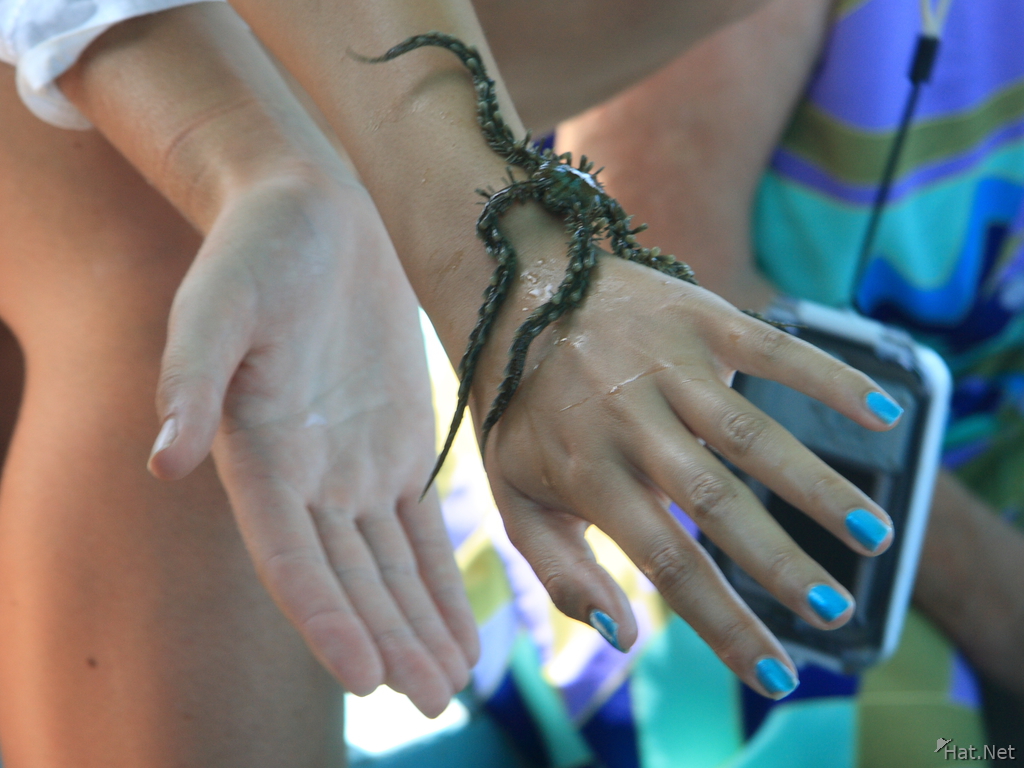monster sea spider, spider
Sea spiders have long legs in contrast to a small body size. The number of walking legs is usually eight (four pairs), but species with five and six pairs exist. Because of their small size and slender body and legs, no respiratory system is necessary, with gases moving by diffusion. A proboscis allows them to suck nutrients from soft-bodied invertebrates, and their digestive tract has diverticula extending into the legs.
Pycnogonids are so small that each of their tiny muscles consists of only one single cell, surrounded by connective tissue. The anterior region consists of the proboscis, which has fairly limited dorsoventral and lateral movement, and three to four appendages including the ovigers, which are used in caring for young and cleaning as well as courtship. In some species, the chelifores, palps and ovigers can be reduced or missing in adults. In those species that lacks chelifores and palps, the proboscis is well developed and more mobile and flexible, often equipped with numerous sensory bristles and strong rasping ridges around the mouth. The last segment includes the anus and tubercle, which projects dorsally.
In total, Pycnogonids have four to six pairs of legs for walking as well as other appendages which often resemble legs. A cephalothorax and much smaller abdomen make up the extremely reduced body of the Pycnogonid, which has up to two pairs of dorsally located simple eyes on its non-calcareous exoskeleton, though sometimes the eyes can be missing, especially among species living in the deep oceans. The abdomen does not have any appendages, and in most species it is reduced and almost vestigial. The organs of this fascinating chelicerate extend throughout many appendages because its body is too small to accommodate all of them alone.
The morphology of the sea spider creates a perfect surface-area to volume ratio for any respiration to occur through direct diffusion. The most recent research seems to indicate that waste leaves the body through the digestive tract or is lost during a moult. The small, long, thin pycnogonid heart beats vigorously at 90 to 180 beats per minute, creating substantial blood pressure. These creatures possess an open circulatory system as well as a nervous system consisting of a brain which is connected to two ventral nerve cords, which in turn connect to specific nerves.
| Itinerary | . feeling: neutral, slighly upbeat | ||
|---|---|---|---|
| Country | Kenya | State | East Africa |
| City | Diani Beach | Weather | Sunny and hot |
| Continent | Africa | Day | Diani Beach |
| Activity | glass boat | Tour | GAP (Great Adventure People) |
| Feeling | mild upbeat | User Comment | |
| Date | 2007:10:10 10:25:41 | Make | Canon |
| Model | Canon EOS DIGITAL REBEL XTi | Width | 2489 |
| Height | 1867 | Flash | Off, Did not fire |
| Focal | 85.0 mm | Exposure | 1/100 |
| F Number | 5.6 | ISO | 200 |
| White Bal. | Auto | Program | Aperture-priority AE |
| Compensation | 0 | Hyperfocal | 69.49 m |
| Latitude | -4.33746388888889 | Longitude | 39.5754444444444 |
| Altitude | 0.6000000238 m | File Size | 3.3 MB |

